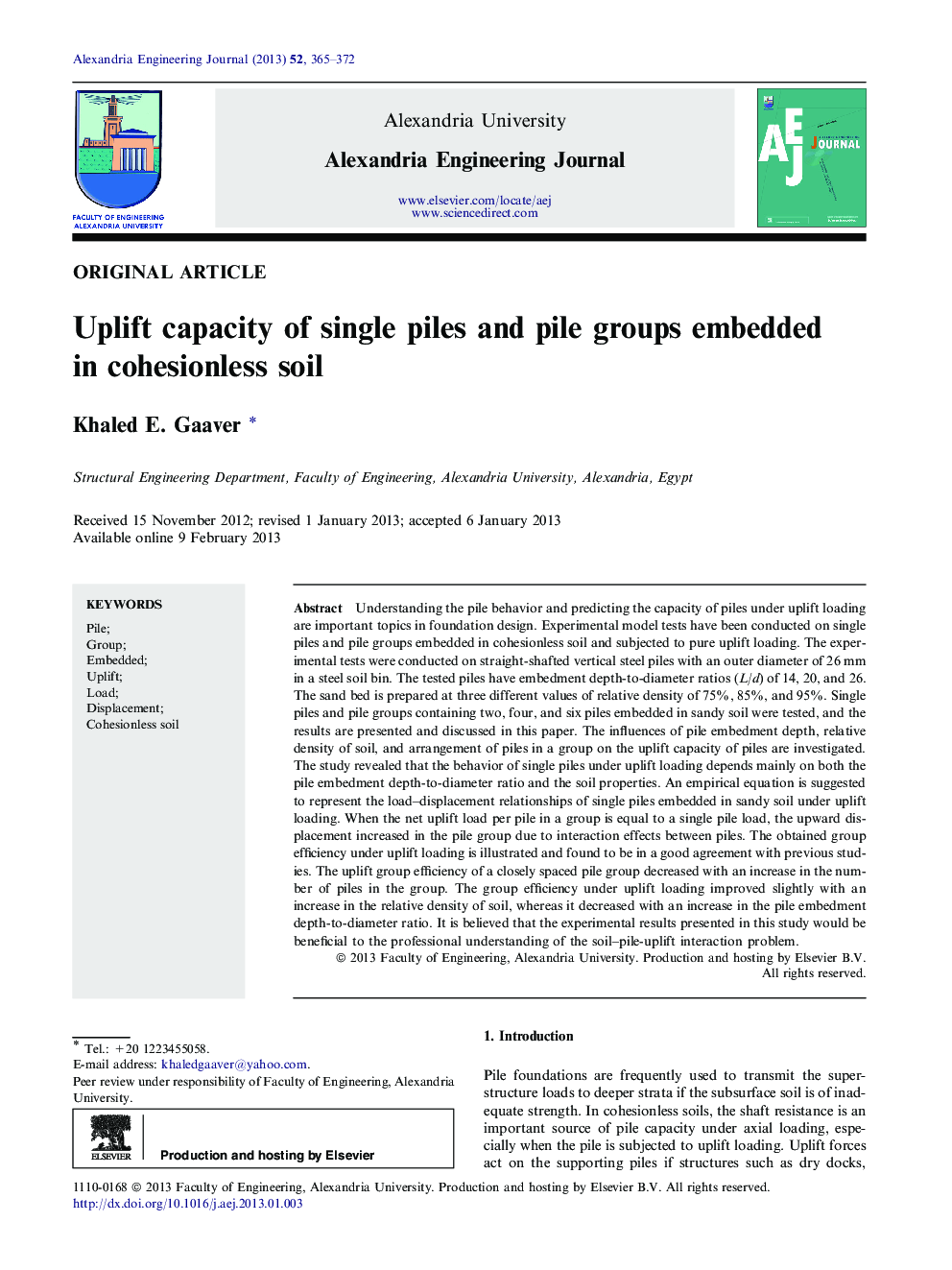| Article ID | Journal | Published Year | Pages | File Type |
|---|---|---|---|---|
| 816246 | Alexandria Engineering Journal | 2013 | 8 Pages |
Understanding the pile behavior and predicting the capacity of piles under uplift loading are important topics in foundation design. Experimental model tests have been conducted on single piles and pile groups embedded in cohesionless soil and subjected to pure uplift loading. The experimental tests were conducted on straight-shafted vertical steel piles with an outer diameter of 26 mm in a steel soil bin. The tested piles have embedment depth-to-diameter ratios (L/d) of 14, 20, and 26. The sand bed is prepared at three different values of relative density of 75%, 85%, and 95%. Single piles and pile groups containing two, four, and six piles embedded in sandy soil were tested, and the results are presented and discussed in this paper. The influences of pile embedment depth, relative density of soil, and arrangement of piles in a group on the uplift capacity of piles are investigated. The study revealed that the behavior of single piles under uplift loading depends mainly on both the pile embedment depth-to-diameter ratio and the soil properties. An empirical equation is suggested to represent the load–displacement relationships of single piles embedded in sandy soil under uplift loading. When the net uplift load per pile in a group is equal to a single pile load, the upward displacement increased in the pile group due to interaction effects between piles. The obtained group efficiency under uplift loading is illustrated and found to be in a good agreement with previous studies. The uplift group efficiency of a closely spaced pile group decreased with an increase in the number of piles in the group. The group efficiency under uplift loading improved slightly with an increase in the relative density of soil, whereas it decreased with an increase in the pile embedment depth-to-diameter ratio. It is believed that the experimental results presented in this study would be beneficial to the professional understanding of the soil–pile-uplift interaction problem.
